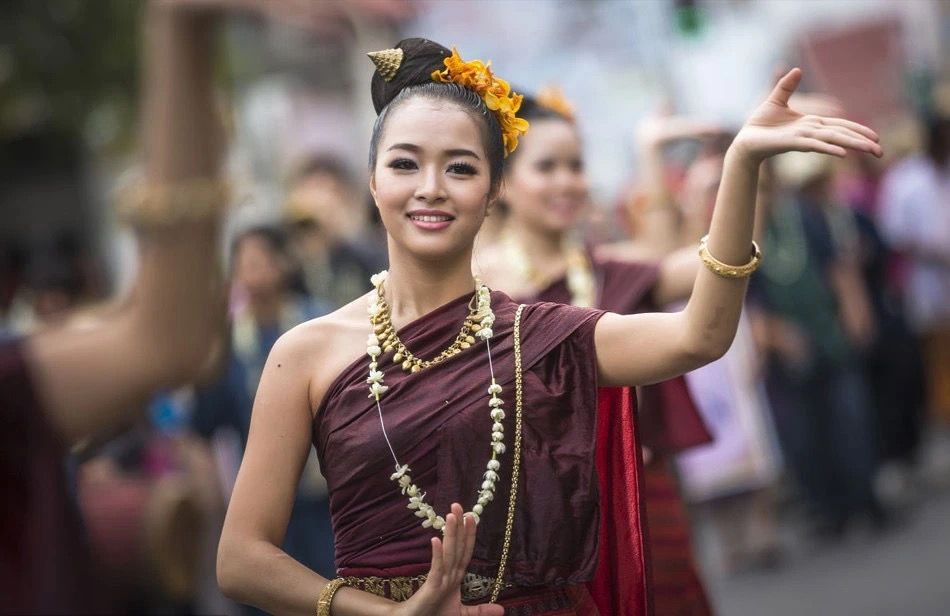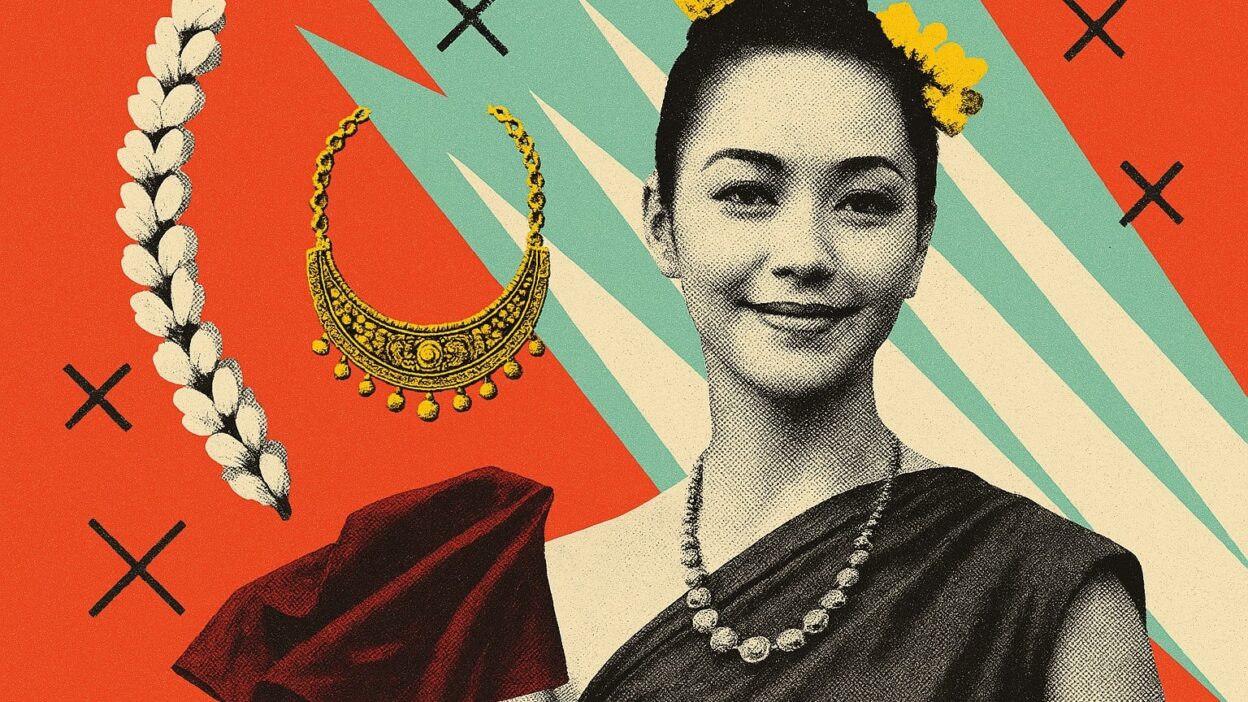
Steeped in centuries-old tradition, this dance form traces its roots to royal courts and temple ceremonies. Originating in Southeast Asia, it blends religious reverence and community celebration. Street festivals transform quiet lanes into stages, inviting locals and visitors alike to witness Southeast Asian traditional dance, a living heritage come alive. Through these performances, dancers honor deities, seasons, and ancestral spirits, ensuring that cultural memory flows as gracefully as each hand movement.
The dancer’s costume is both functional and symbolic. The chong kraben—a wrap skirt allowing freedom of motion—pairs with a taut, single-shoulder drape that accentuates the dancer’s lines. Gold accessories represent prosperity and divine favor; jasmine garlands are offerings, their sweet scent signifying purity. Color choices—deep burgundy and shimmering gold—echo royal palettes, while the floral hairpiece references nature’s bounty, blending earthly beauty with sacred ritual, as seen in many Southeast Asian traditional dances.
Each hand gesture (mudrā) conveys meaning: an uplifted palm might symbolize a blooming lotus, while a sideways sweep evokes flowing water. Footwork grounds the performance; precise steps punctuate pauses, creating rhythmic tension. Facial expressions—soft smiles, focused gazes—invite the audience into the narrative, bridging performer and spectator. Behind the finesse lies rigorous training found in Southeast Asian traditional dance, as dancers spend years mastering posture, timing, and the subtle interplay between motion and stillness.
Her serene smile contrasts with the intensity of her raised arm, suggesting a story of yearning or celebration within the context of Southeast Asian traditional dance. The glint in her eye reveals confidence born of practice, while the gentle curve of her fingers speaks of tenderness or welcome. In the fleeting alignment of arm and spine, one senses the quiet joy of self-expression—an intimate dance between formality and freedom.
Beyond aesthetic beauty, each element carries layered significance. The jasmine garland isn’t mere decoration but an offering to ancestors. Gold jewelry isn’t only ornate—it channels blessings from celestial realms. Movement itself is an act of devotion: every gesture honors gods, ancestors, and community, reaffirming shared identity. Through this performance, dancers become living vessels of history and belief, showcasing Southeast Asian traditional dance.
Today, these dances bridge past and present. Young performers fuse classical steps with modern themes—urban festivals, international cultural exchanges, digital showcases—ensuring that Southeast Asian traditional dance evolves. Tourists snap photos, social media amplifies each flourish, and workshops teach global audiences. In doing so, communities safeguard their heritage, finding in each performance a renewed sense of pride and continuity.
Watching this dancer is to witness time made tangible. In her movements, we see generations of artistry, devotion, and resilience. As she steps forward, she carries both history and hope—inviting us all to celebrate the beauty of tradition, to connect with stories beyond our own, and to remember that, sometimes, a single gesture can speak volumes about Southeast Asian traditional dance.




